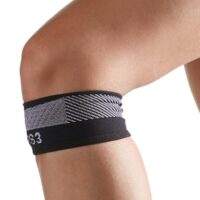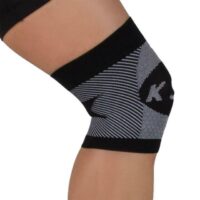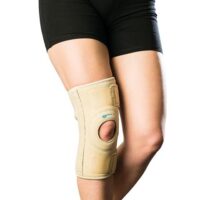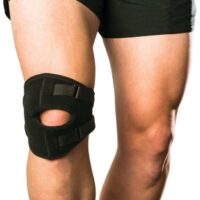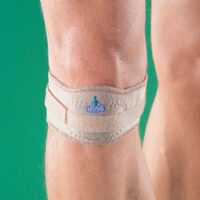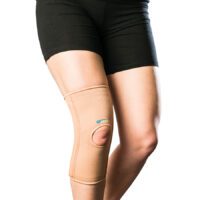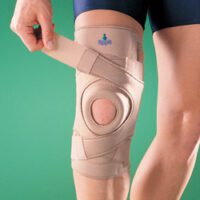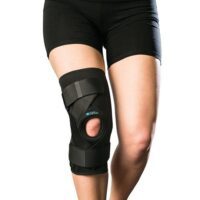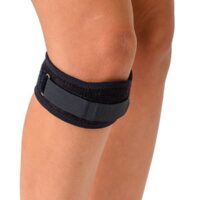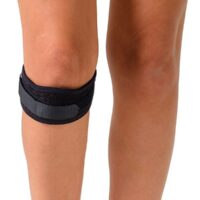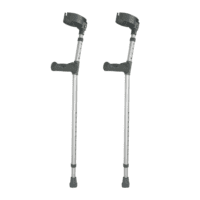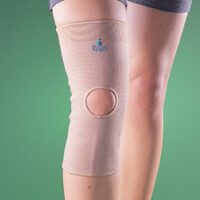
Patellar Tendinopathy
An In-Depth Guide for Athletes and Active Individuals
What is Patellar Tendinopathy?
Patellar tendinopathy, commonly known as jumper’s knee, is a condition that arises from repetitive overuse of the patellar tendon, the critical band of tissue that connects your kneecap to your shinbone. Athletes who engage in sports that demand extensive running and jumping—such as basketball, volleyball, and track events—are particularly prone to this injury due to the persistent stress on their knee joints.
Patellar Tendinitis vs. Patellar Tendinopathy
A common point of confusion lies in distinguishing between patellar tendinitis and patellar tendinopathy. Patellar tendinitis refers to the acute inflammation of the patellar tendon, typically characterised by sudden and severe pain following injury or overuse. It implies an active inflammatory process in the tendon.
On the other hand, patellar tendinopathy is a broader term that describes chronic degeneration of the patellar tendon without significant inflammation. It is a result of the tendon’s failure to heal properly following repetitive microtrauma, leading to a cycle of incomplete repair and pain. Tendinopathy is often a progression from tendinitis, occurring over time as the acute inflammation fails to resolve completely.
While both conditions affect the same tendon and share similar risk factors and symptoms, their treatment may differ. Acute tendinitis may respond well to anti-inflammatory interventions, whereas tendinopathy requires a more comprehensive approach focusing on tendon healing and rehabilitation.
Incorporating this understanding into treatment plans is crucial, as misdiagnosing tendinopathy as tendinitis can lead to inadequate treatment and prolonged recovery times.
The Role of the Patellar Tendon
The patellar tendon is a key player in enabling knee joint movements, acting as a bridge for the force generated by the quadriceps muscles to the lower leg. This allows for seamless motion when undertaking activities like running, jumping, landing, or even navigating stairs.

Consequences and Risks of Ignoring Patellar Tendinopathy
If left unaddressed, patellar tendinopathy may culminate in chronic pain and impose severe limitations on both daily activities and sports participation. Athletes, especially those in high-impact sports, along with older adults experiencing tendon degeneration, face a heightened risk of developing this condition.
Recognising the Signs and Initiating Diagnosis
Patellar tendinopathy presents as pain at the front of the knee, which typically worsens with jump-intensive activities or prolonged periods of sitting. The onset of pain is often gradual and correlates with an uptick in physical activity. Early recognition of symptoms like tenderness, stiffness (especially in the morning), and a palpably thickened tendon, followed by a comprehensive physical examination by a physiotherapist, is crucial. Diagnostic imaging such as ultrasound or MRI may be employed to confirm the diagnosis and gauge the extent of the tendon injury.
Expanding on Treatment and Rehabilitation
Upon diagnosis, initial treatment focuses on mitigating inflammation and pain. This phase may include rest, application of ice, and gentle stretching or roller exercises to preserve muscle and tendon flexibility. A physiotherapist’s role becomes central as they develop a bespoke rehabilitation program, incorporating exercises aimed at strengthening the quadriceps and patellar tendon and addressing any biomechanical deficits that may have contributed to the injury.
Advancing beyond the initial phase, targeted interventions such as isometric, eccentric strengthening exercises, load management, and, in some cases, shockwave therapy, injections or surgery, may be considered. The treatment regimen is usually progressive, tailored to the patient’s response, and monitored closely by your physiotherapist.
Load Management in Rehabilitation and Injury Prevention
Load management is a critical component in both the rehabilitation of patellar tendinopathy and the prevention of such injuries. It involves the careful monitoring and control of the amount and intensity of physical stress placed on the knee joint, particularly the patellar tendon.
During rehabilitation, gradual load increment is essential to allow the tendon to adapt and strengthen without overburdening it, which could lead to re-injury. The process starts with low-impact exercises and slowly progresses to more demanding activities, tailored to the individual’s recovery pace.
For injury prevention, load management includes planning training schedules to provide adequate rest periods, avoiding sudden spikes in activity levels, and ensuring a balanced mix of training types. This approach helps maintain tendon integrity and resilience, reducing the risk of tendinopathy development.
Incorporating load management strategies, athletes can optimise their training, enhance performance, and minimise the risk of patellar tendon overuse injuries.
Prognosis and Preventive Measures
The prognosis for patellar tendinopathy is generally positive with timely and appropriate intervention. A structured treatment plan can facilitate a return to pre-injury levels of activity. To prevent recurrence, it’s imperative to incorporate preventive measures such as proper warm-up routines, regular stretching, and strength training into one’s fitness regime. Modifications to training volume and intensity, alongside appropriate footwear and technique refinement, also play a significant role in mitigating the risk of reinjury.
Conclusion
Patellar tendinopathy, while a common affliction among athletes, can be effectively managed with a comprehensive approach that includes education, tailored physiotherapy, and lifestyle modifications. Recognising the signs early on and engaging in proactive treatment maximises the likelihood of a successful recovery. For those navigating this injury, ongoing consultation with a physiotherapist is essential to ensure optimal outcomes and to facilitate a safe and timely return to sport.
Rochedale - Call 38410277
Book Online: RochedaleSalisbury - Call 32751044
Book Online: SalisburySandgate - Call 32691122
Book Online: SandgateRelated Articles
- Patella Enthesopathy: Offers insights into a condition affecting the patellar tendon, similar to patellar tendinopathy.
- Quadriceps Tendinopathy: Discusses issues related to the quadriceps tendon, providing relevant information for those with patellar tendinopathy as the two areas are closely connected.
- Pes Anserinus Tendinopathy: Explores another type of knee tendinopathy, giving a broader understanding of tendon issues in the knee area.
- Knee Ligament Injuries: Covers various knee ligament injuries, important for understanding the broader context of knee pain and injuries.
- Knee Meniscus Injuries: Provides information on meniscus tears, a common knee injury that can be relevant to those interested in patellar tendinopathy.
- Kneecap Pain: Discusses various conditions leading to pain in the kneecap, which is directly relevant to those experiencing patellar tendinopathy.
- Knee Arthritis: Offers information on arthritis in the knee, which can be beneficial for understanding chronic knee conditions alongside patellar tendinopathy.
- Knee Bursitis: Explains the inflammation of bursae in the knee, relevant for those exploring different causes of knee pain.
- Children’s Knee Conditions: Discusses knee conditions specific to young athletes, which can be useful for a broader audience including those dealing with juvenile patellar tendinopathy.
Social Media
Stay connected with us on social media for valuable tips on managing patellar pain and improving knee health. Access advice from experienced physiotherapists to keep your body moving smoothly.




